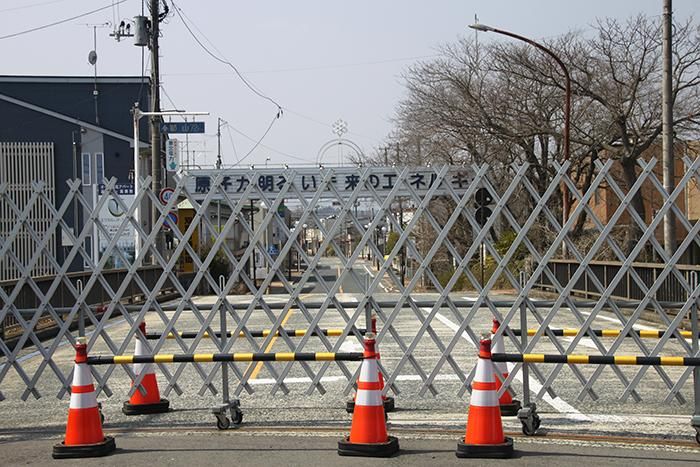Losing faith: the Fukushima cleanup at six years
By Dawn Stover | March 13, 2017
 A welcoming banner in one of the abandoned small towns immediately outside the ruined Fukushima Daiichi power plant says “Nuclear Power is Our Future.”
A welcoming banner in one of the abandoned small towns immediately outside the ruined Fukushima Daiichi power plant says “Nuclear Power is Our Future.”
Six years after the nuclear disaster at the Fukushima Daiichi power plant, “the Japanese public has lost faith in nuclear safety regulation, and a majority favors phasing out nuclear power,” writes Tatsujiro Suzuki, professor and director of the Research Center for Nuclear Weapons Abolition at Nagasaki University. Suzuki wrote frequent, raw updates for the Bulletin in the weeks immediately after the 2011 meltdowns, when he was vice chairman of the Japan Atomic Energy Commission. He has posted additional updates in the years since then.
Today, only about 13 percent of the more than 100,000 people evacuated six years ago have returned to their homes. As the New York Times recently reported, Japanese officials are struggling with how to handle an enormous amount of radioactive sludge, soil, rubble, downed branches, discarded protective clothing, and reactor cooling water. About 400 tons of newly contaminated water are added to the stockpile each day—and the Tokyo Electric Power Company continues to add new storage tanks to some 1,000 tanks already on site.
One of the toughest tasks will be cleaning up the reactor fuel that melted during the height of the disaster, as well as the spent fuel rods that were submerged in the plant’s cooling pools at the time of the reactor meltdowns. According to The Guardian, a Japan-based senior nuclear specialist at Greenpeace Germany recently described the scale and difficulty of the Fukushima decommissioning as “unprecedented and almost beyond comprehension.”
Before the Fukushima disaster, there were 54 nuclear reactors operating in Japan, producing about one-third of the nation’s electricity. Even with only two nuclear reactors currently operating, the Japanese have managed to conserve enough energy to avoid power shortages, and the majority of the public opposes restarting existing nuclear reactors or building new ones. Nevertheless, Japanese prime minister Shinzo Abe is forging ahead with a plan to produce one-fifth of Japan’s electricity from nuclear power by 2030.
Suzuki urges the Abe government to “consider fundamental shifts in nuclear energy policy to recover public trust” and warns that “staying on the current path may undermine Japan’s economic and political security.”
Publication Name: The Conversation
To read what we're reading, click here
Together, we make the world safer.
The Bulletin elevates expert voices above the noise. But as an independent nonprofit organization, our operations depend on the support of readers like you. Help us continue to deliver quality journalism that holds leaders accountable. Your support of our work at any level is important. In return, we promise our coverage will be understandable, influential, vigilant, solution-oriented, and fair-minded. Together we can make a difference.
Topics: Nuclear Energy, What We’re Reading














